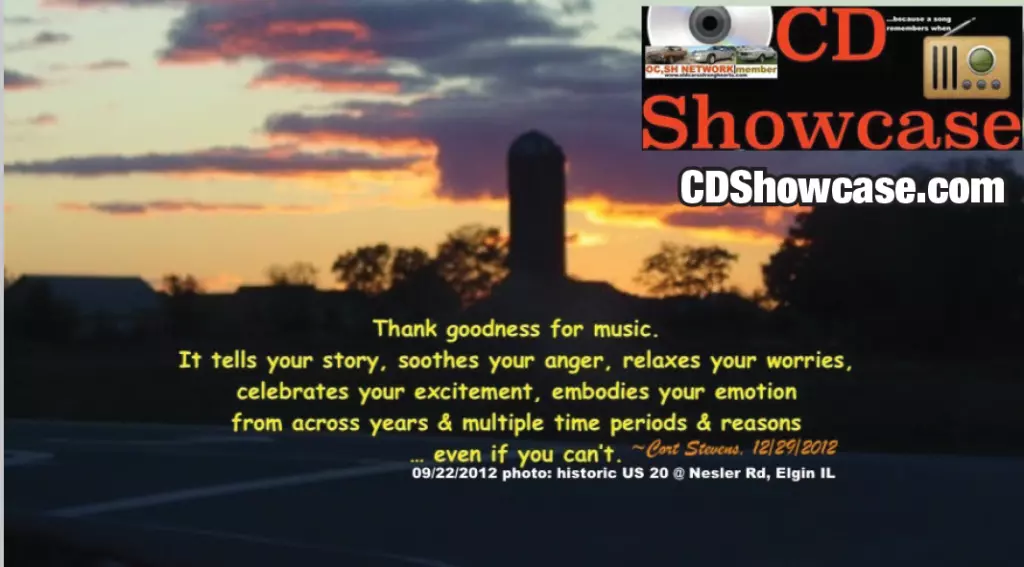Discover the momentous motoring events that took place this week in history …..
110 years ago this week, a Great Chadwick Six driven by Willi Haupt became the first supercharged car to win a speed hillclimb, when it broke the record at Giant’s Despair, Pennsylvania, covering the one mile climb in 1 minute 38.4 seconds [30 May 1908]……The St. Petersburg-Moscow race was won by Victor Héméry in a Benz Grand Prix at the remarkable speed of 51.4 mph over 438 miles of ‘cart-tracks’ [1 June 1908]…….the following day [2 June 1908], the Everitt-Metzger-Flanders Company was founded by Barney Everitt, William E. Metzger, and Walter E. Flanders. William E. Kelly was Chief Engineer of the company which built the E-M-F
automobile…….Alfred Velghe, known as Levegh, driving a Mors 28hp car won the Bordeaux-Perigueux-Bordeaux race (195.5 miles), in 4 hours 1 minutes 45 seconds [3 June 1908]. The first stage of the race (72 miles) was accomplished in 1 hour 24 minutes 35 seconds, equal to 51 miles an hour..90 years ago this week, Fritz von Opel reached 200 kph (124 mph) in experimental rocket car- cover image [29 May 1928]……Jimmy Gleason had a good lead in the Indianapolis 500 when he stopped for water for the radiator on lap 195 [30 May 1928]. A crew member missed the radiator and doused the car’s magneto. Gleason was out and Louis Meyer won……80 years ago this week, the Gávea National Circuit race in Brazil was a South American affair with no major European entries [29 May 1938]. Nascimento Junior took the lead followed by Chico Landi and Querino Landi. Soon Mário Valentim passed for third while up at the front Nascimento Junior opened up the gap. At half distance Nascimento was leading by over 80 second from Chico Landi who held an even greater gap to Valentim whose third position was challenged by Cañedo and Avellar. Nascimento took it easy during the second half of
the race to win from Chico Landi and Cañedo……The following day [30 May 1938]Floyd Roberts driving the ill-fated Burd Piston Ring Special, dominated to win the Indianapolis 500 by three laps. Roberts’ car started in the pole position, and was the first car to win from that start since 1930. Roberts led 92 laps, posted an average speed of 117.200 miles per hours, and won $32,075. Roberts’ car was owned by Lou Moore, who was also the chief mechanic. The race was marred by the death of 33-year-old spectator Everett Spence. On lap 45 the number 42 car driven by Emil Andres hit the wall in turn two, then flipped over several times, causing its right front wheel to fly off. The wheel traveled 100 feet (30 m) through the air and hit Spence, who was pronounced dead upon arriving at the hospital. Andres suffered a concussion, broken nose, and chest injuries. For 1938, riding mechanics were made optional; however, no teams utilized them in the race…….Upper Austria, Styria, and the eastern half of Salzburg switched from driving on the left to driving on the right side of the road [1 June 1938]……70 years ago this week, veteran driver Paul Pappy outran 19-year-old rookie Fireball Roberts to win the 40-lap Modified championship race at Jacksonville. It was the first time Roberts emerged as a stout contender [30 May 1948]……For the second year in a row, the Blue Crown
Spark Plug teammates Mauri Rose and Bill Holland finished 1st-2nd at the Indianapolis 500. Rose became the second driver to win the Indianapolis 500 in consecutive years [31 May 1948]. Unlike the previous year’s race, no controversy surrounds the results. Coupled with his co-victory in 1941, Rose became the third three-time winner at Indy. Fourth place finisher Ted Horn completed a noteworthy record of nine consecutive races from 1936-1948 completing 1,799 out of a possible 1,800 laps. His nine consecutive finishes of 4th or better (however, with no victories) is the best such streak in Indy history. The only lap he missed in 1940 was due to being flagged for a rain shower. Duke Nalon’s third-place finish would be the best-ever result for the popular Novi engine…….William Clay Ford was elected a director of the Ford Motor Company [3 June 1948]. He began his employment with the company after graduating from Yale University in 1949. In 1957 he was elected chairman of the Design Committee, a post he held for 32 years. Throughout his career, he was instrumental in setting the company’s design direction, overseeing the development of a number of classic vehicles, including the Continental Mark II, considered by many to be one of the most iconic cars ever built. In 1978, Mr. Ford was elected chairman of the Executive Committee and appointed a member of the Office of the Chief Executive. He was elected vice chairman of the Board in 1980 and chairman of the Finance Committee in 1987. He retired from his post as vice chairman in 1989 and as chairman of the Finance Committee in 1995. He retired from the board and was named Director Emeritus on May 12, 2005. Mr. Ford is survived by his wife of 66 years, Martha Firestone Ford; daughters Martha Ford Morse (Peter), Sheila Ford Hamp (Steven), and Elizabeth Ford Kontulis (Charles); son William Clay Ford, Jr. (Lisa); 14 grandchildren and two great-grandchildren. He became president of the Detroit Lions football team in 1961. He purchased the team in November 1963 and served as its chairman until his death. He also was a dedicated and generous philanthropist and community leader. In addition he was chairman of the board of trustees of the Henry Ford Museum from 1951 to 1983, after which he was named chairman emeritus. Mr. Ford served as a director of the Detroit Economic Club, was an honorary life trustee of the Eisenhower Medical Center and a national trustee for the Boys’ and Girls’ Clubs of America. He also was an honorary buy xanax mastercard chair of the United Way for Southeastern Michigan and served on the Texas Heart Institute National Advisory Council. In 1996, Henry Ford Hospital opened The William Clay Ford Center for Athletic Medicine, a leading sports medicine treatment and research institution. In 1997, the outdoor courts of the University of Michigan’s new tennis center also were named in his honor. The largest donor in history at the Henry Ford Museum, the Great Hall of the museum – The William Clay Ford Hall of American Innovation – also was named in recognition of his support……..60 years ago this week, Fireball Roberts drove his Chevrolet to a big win in the 500-mile NASCAR Grand National race at Trenton, New Jersey (US). The race was the first 500-miler staged north of Darlington (North Carolina, US) [30 May 1958]…….on the same day [30 May 1958], a huge wreck in turn three on the opening lap of the Indianapolis 500 wiped out several
cars, and driver Pat O’Connor was fatally injured. Jimmy Bryan was the race winner. The race featured young rookie A. J. Foyt’s debut at Indy. On lap 148, he spun in an oil slick, blew out the tires, and dropped out of the race. This marked the first time that one car would carry two drivers to separate wins at the race, in back-to-back years, with Sam Hanks winning the previous year’s race in the same car. Juan Manuel Fangio arrived at Indy under much fanfare as he attempted to qualify for the 500 and score points towards the World Championship. He practiced early in the month, but withdrew when he could not get up to speed……..Riverside International Raceway in Southern California opened with three 500-mile races in one weekend. Eddie Gray captured the Crown America 500 for NASCAR Grand National cars in an event that took more than six hours to complete [31 May 1958]……..Erwin Bauer (45) was killed in a 2-litre sports Ferrari at Nürburgring where, not realising he had passed the chequered flag, kept on racing and crashed fatally on what was supposed to be his slowing-down lap [3 June 1958]……..50 years ago this week, on lap 174 of the Indianapolis 500 Lloyd Ruby’s engine misfired
allowing Joe Leonard’s STP Lotus turbine into the lead [30 May 1968]. Leonard’s leading Lotus flamed out on a lap 190 restart and rolled to a silent halt. Bobby Unser sailed by to win. Jim Hurtubise’s entry, which dropped out after nine laps, was the last front-engine car to race in the 500……..British Motor Holdings (BMH) merged with LMVC (Leyland Motor Vehicle Corporation) to become British Leyland Motor Corporation [31 May 1968]. It was partly nationalised in 1975, when the UK government created a holding company called British Leyland, later BL, in 1978. It incorporated much of the British-owned motor vehicle industry, which constituted 40 percent of the UK car market, with roots going back to 1895. Despite containing profitable marques such as Jaguar, Rover and Land Rover, as well as the best-selling Mini, British Leyland had a troubled history. In 1986 it was renamed as the Rover Group, later to become MG Rover Group, which went into administration in 2005, bringing mass car production by British-owned manufacturers to an end. MG and the Austin, Morris and Wolseley marques became part of China’s SAIC, with whom MG Rover attempted to merge prior to administration. Today, MINI, Jaguar Land Rover and Leyland Trucks (now owned by BMW Group, TATA and Paccar, respectively) are the three most prominent former parts of British Leyland which are still active in the automotive industry, with SAIC-owned MG Motor continuing a small presence at the Longbridge site. Certain other related ex-BL businesses, such as Unipart), continue to operate independently……..40 years ago this week, Al Unser easily led the Indianapolis 500 but bent his Lola’s front wing in the pitlane on lap 180 [28 May 1978]. Tom Sneva charged to catch the crippled Lola but was 8 seconds short at the finish. Unser led 121 laps and held on for a third win on a very hot day. Janet Guthrie finished ninth, the highest finish for a woman in Indy 500 history–a feat that was eventually topped 27 years later…… Cale Yarborough started second but dominated in leading all 420 laps of the Music City USA 420 at Nashville Speedway, Tennessee, US [3 June 1978]. Yarborough, who took over the points lead on the way to his third straight Cup championship, was two laps ahead of runner-up Lennie Pond at the finish. Richard Petty was third, four laps off Yarborough’s blistering pace…….30 years ago this week, at the Mexico Grand Prix held in Mexico City, McLaren teammates started 1-2 with Senna on pole and Prost outside him [29 May 1988]. At the finish, it was Prost winning by 7.104 seconds over Senna. Prost also set fastest lap to do it. Gerhard Berger was third in the Ferrari, his starting position. His teammate, Alboreto advanced one position to finish fourth, though 1 lap down. Arrows driver, Derek Warwick came from ninth to finish fifth. Eddie Cheever was sixth in his Arrows…….The publishers of Consumer Reports magazine called for a ban on the Suzuki Samurai, a popular sport utility vehicle that the magazine said tended to roll over in sudden turns [2 June 1988]. American Suzuki Motor Corporation defended the vehicle as safe…….. 20 years ago this week, at the Retromobile Show in Paris, Citroën displayed three unique pre-war 2CV models from a series corresponding to the vehicle approved in 1939 [2 June 1998]……… 10 years ago this week, the sale of Jaguar to Tata was completed at a cost of £1.7 billion [2 June 2008]…….Chasing Classic Cars, a US television documentary series, was first broadcast in the US [3 June 2008]. The programme starred Wayne Carini who found and chased classic cars from all eras, focusing on finding, getting cars running and generating a profit from their resale.





